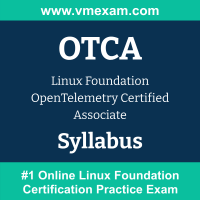
Observability has rapidly evolved from a nice-to-have to a critical requirement for modern, cloud-native applications. With complex, distributed systems spanning containers, microservices, and multiple cloud environments, understanding how data flows, where failures occur, and how to optimize performance is essential. OpenTelemetry has emerged as the leading open-source observability framework, providing a unified way to collect, process, and export telemetry data for metrics, traces, and logs. If you’re looking to validate your expertise in OpenTelemetry and observability practices, obtaining the OTCA Certification (OpenTelemetry Certified Associate) is a strategic move.
This blog will walk you through everything you need to know - from exam structure to expert preparation tips - to pass the OTCA Exam confidently.
What is OTCA Certification?
The OpenTelemetry Certified Associate (OTCA) credential, offered by the Linux Foundation, is designed for developers, SREs, DevOps engineers, and IT professionals looking to demonstrate foundational knowledge of OpenTelemetry. It focuses on key concepts, tools, and best practices used in modern observability pipelines.

 The Linux Foundation OTCA exam preparation guide is designed to provide candidates with necessary information about the OpenTelemetry Associate exam. It includes exam summary, sample questions, practice test, objectives and ways to interpret the exam objectives to enable candidates to assess the types of questions-answers that may be asked during the OpenTelemetry Certified Associate (OTCA) exam.
The Linux Foundation OTCA exam preparation guide is designed to provide candidates with necessary information about the OpenTelemetry Associate exam. It includes exam summary, sample questions, practice test, objectives and ways to interpret the exam objectives to enable candidates to assess the types of questions-answers that may be asked during the OpenTelemetry Certified Associate (OTCA) exam.